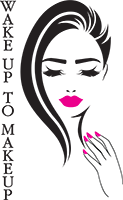What Are Ombré Powdered Brows
Ombré Powdered Brows is the newest shading technique. It is 100% customizable and is great for anyone who wants a soft and natural look. This method creates pixilated dots to mimic powder filled brows with no flat front or outline. This shading technique is versatile and can be performed alone or in combining with microblading whether the client is looking for a subtle or bold brow. The retention and healing results tend to be better in comparison to microblading.
The combination of both microblading and shading is becoming very popular, which is fantastic for someone who is looking for hair-like texture, definition, and density. Clients who have suffered from hair loss caused by cancer, alopecia, thyroid, et cetera can significantly benefit from this combo to achieve a realistic look. Depending on the circumstances, microblading alone can look too light. By incorporating some shading, the client can get the density as well as hair strokes from microblading. This combo method is also a better option for an individual with oily skin as microblading alone is not best suited for oily skin types. The constant oil production can cause hair strokes to heal powdery and diffused.
What Does an Ombré Brow Look Like?
The front of the brow starts lighter, and as you move to the arch and tail, they get darker. The effects are semi-permanent but last longer than microblading.
How Much Ombré Brow?
Your artist’s skill level, and how much blade and shading needs to be done to your eyebrows can all impact the final cost of your procedure. At Wake Up To Makeup, Pricing starts at $700
Ombré Powdered Brows Healing Schedule
What to expect in the next few weeks of your permanent makeup healing process.
Day 1, your brows will be a bold color, defined lines, tender, redness. The eyebrow area will be slightly red after the procedure, and coloration will appear very dark. This is normal for the process and part of the healing process.
Day 2, eyebrows appear very dark and thicker in texture.
Day 3, the appearance is the same as day two but slightly darker. The color will fade by up to 40% as it heals. In the following days, the eyebrows will continue to be dark, and you will notice slight scabbing.
Day 5, eyebrows will start to itch.
Day 6-8, the eyebrow starts to flake off and will be itchy. Do not pick at the scabs as this may damage the skin and the outcome of the micro-bladed area. The eyebrows will lighten up in color as it heals — no downtime after your Ombré powdered shading procedure.
Day 9-12, the color appears too light, and spots are missing, strokes may appear blurry.
Day 12-14, the color and definition returns should they look very natural and soft. It takes approximately 7-14 days for the brows to heal over, and about one month for the color to fully set in. You’ll notice the color is very light right after the two weeks after healing; the skin will have an opaque milky looking quality to it. Milk skin is common in tattooing. This is due to the tissue healing inside and out even though the surface of the skin is healed. The actual color will reveal itself once healed.
The second Ombré Powdered shading session takes place after 4-6 weeks after the initial procedure. This session will take approximately 1.5-2 hours to complete.
Is The FollowUp Session Necessary?
Eyebrow ReshapingYes! A touch-up session after 4-6 weeks is necessary as everyone heals differently, and the outcome will vary. Certain areas may not pick up during the first session and will need to be refilled. Pigment color may need to be adjusted; brow thickness and more strokes can be added.
Individuals with oily skin often require a deeper shade during the touch-up session, as the oils tend to lighten the pigment. Most importantly, your touch up session is when we refine your brows to ensure it looks perfect and retains the color for the whole year!
Can I get my Follow-Up Session Sooner Than Four Weeks?
Touch up sessions should not be done earlier than four weeks because pigment color has not fully settled into the skin. Most importantly, this is to prevent scar damage, as the tissue requires time to heal completely.
